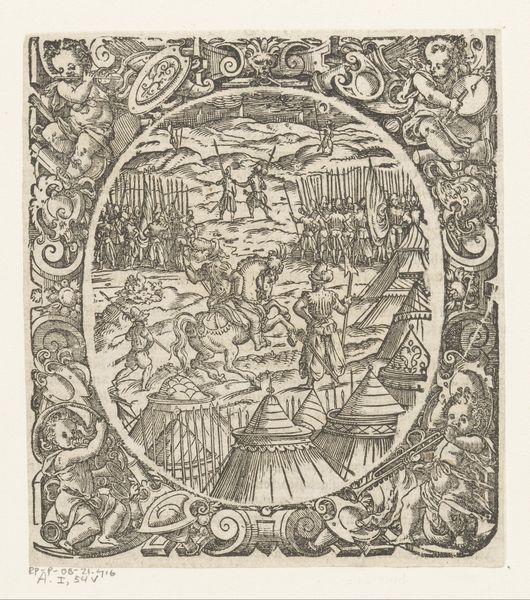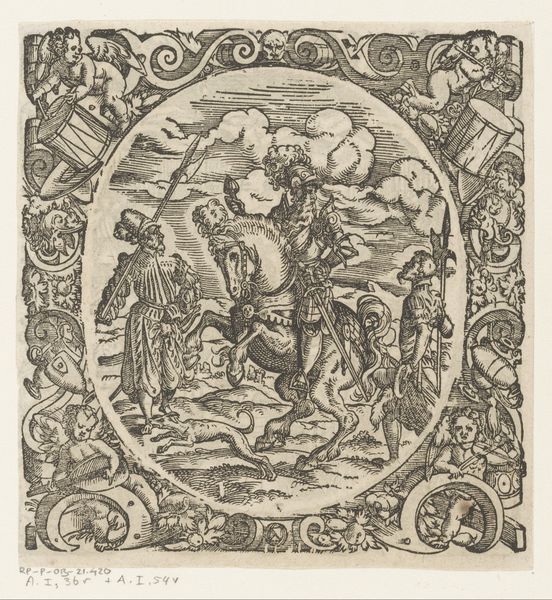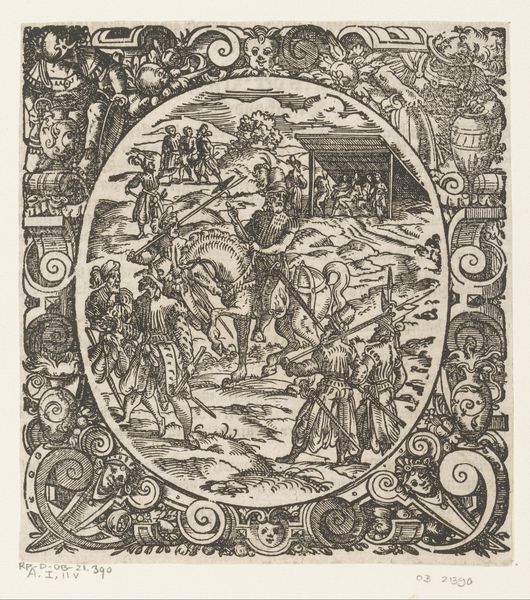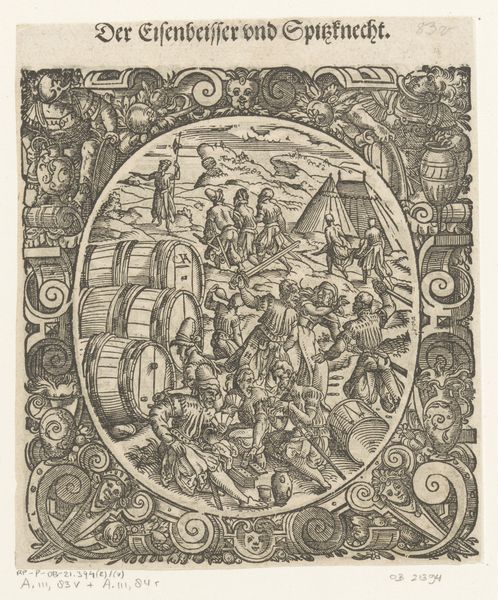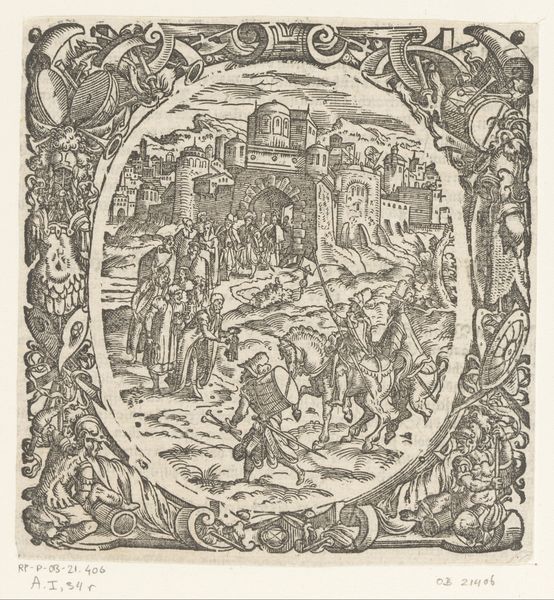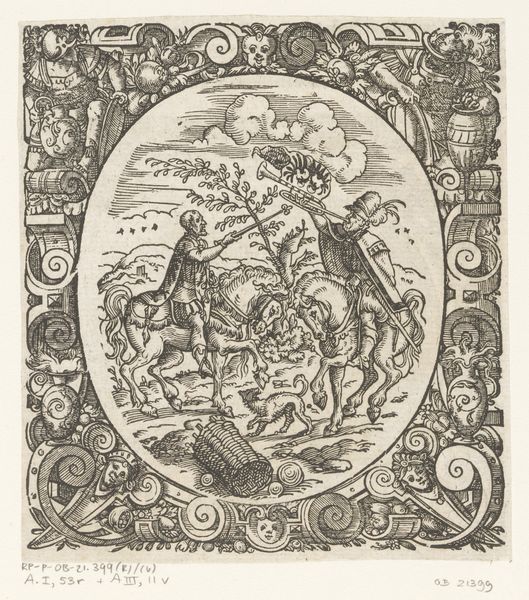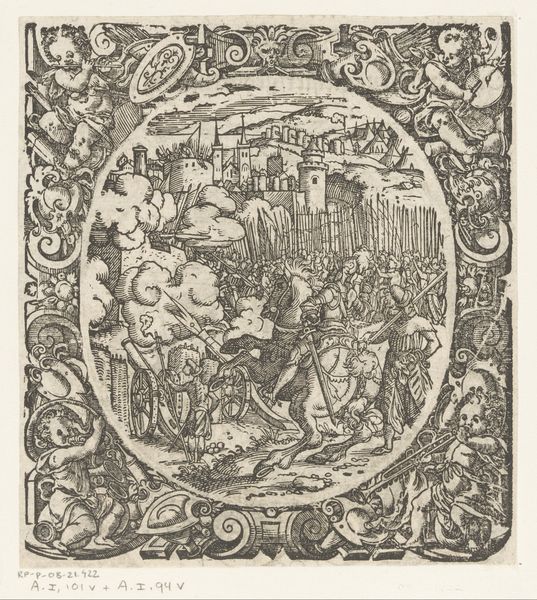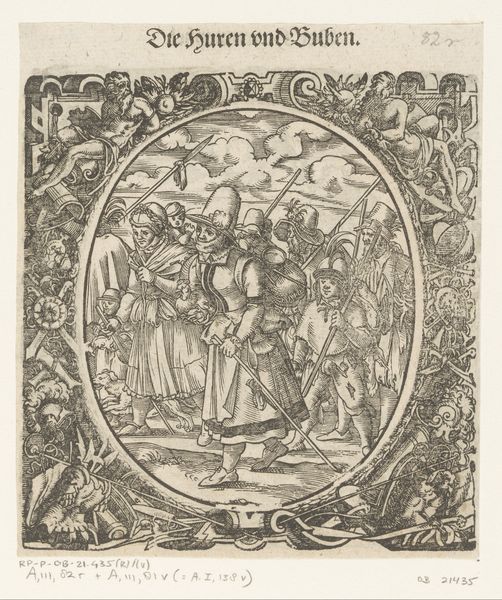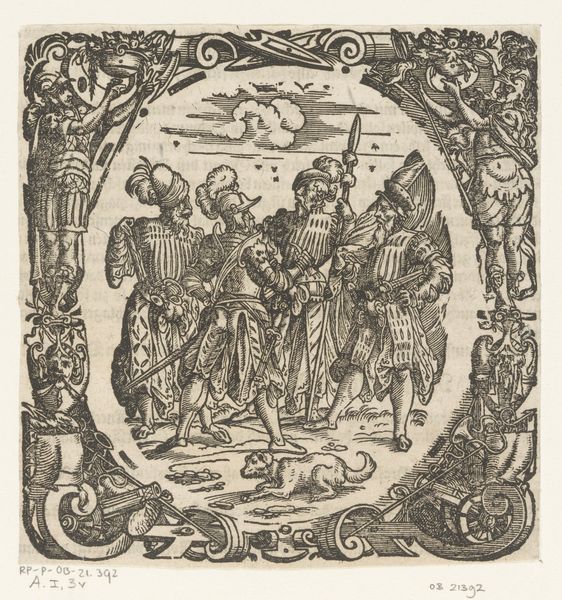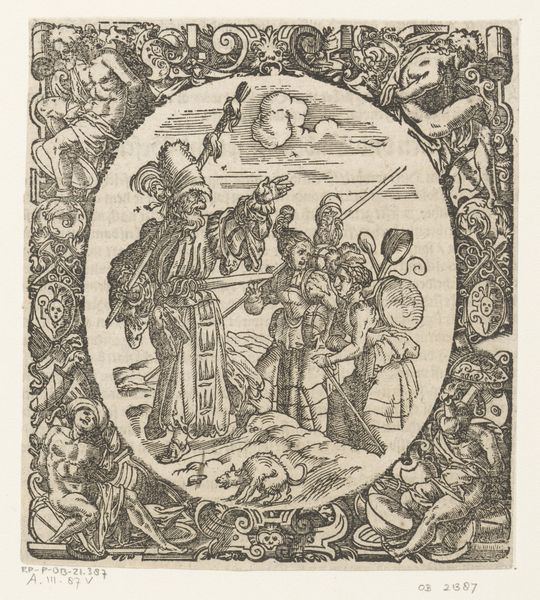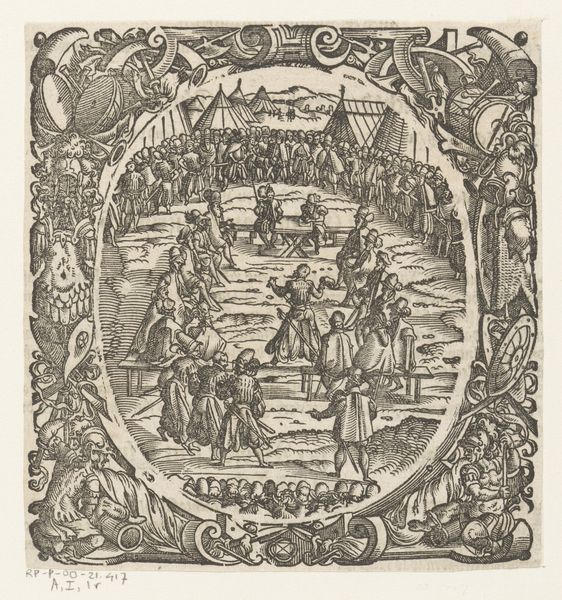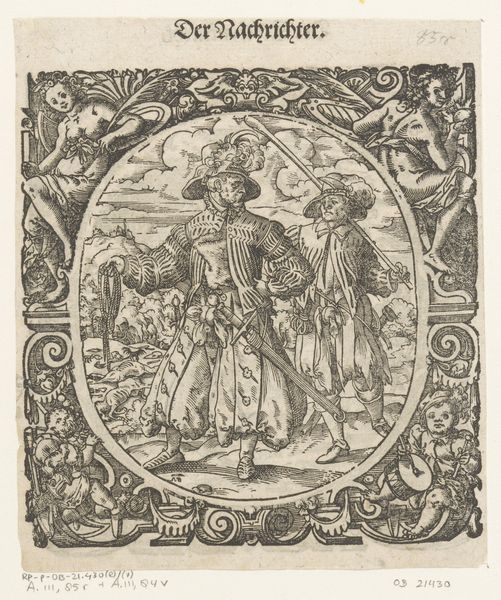
print, engraving
#
narrative-art
# print
#
old engraving style
#
figuration
#
history-painting
#
northern-renaissance
#
engraving
Dimensions: height 138 mm, width 130 mm, height 115 mm, width 97 mm
Copyright: Rijks Museum: Open Domain
Editor: Here we have Jost Amman's engraving from 1573, titled "Legerarts verbindt een gewonde" - "Army Doctor tending to the Wounded." The circular composition draws me in, almost like looking through a porthole. I’m struck by the contrast between the chaotic battle scene in the background and the relative calm of the medical tent in the foreground. What historical context can you provide to help me understand this piece better? Curator: This print provides us a fascinating snapshot of 16th-century military life and its visual representation. Think about the role of printmaking during this period. How do you believe images like these served as a means of communication and shaping public perceptions about warfare and the figures involved? Editor: I guess I hadn't considered the power of prints at that time. Maybe it's meant to glorify the role of the army doctor or legitimize war, making the violence more palatable through an image of care? Curator: Exactly. Consider who this print was intended for. What messages do you think were circulating within the social context of the artwork's origin? Perhaps those involved in military institutions or civilians seeking to better understand war, as they often did. How does this lens inform the image in front of us? Editor: So, it wasn't necessarily about showing the brutal reality of war, but more about constructing a narrative of care, duty, and perhaps even national pride? And the composition, almost theatrical with the figures posed and the curtain pulled back, adds to that sense of constructed narrative. Curator: Precisely! And by looking at how such images were circulated, we gain a much deeper understanding of the power dynamics that played a role in forming public opinion. Images, like the army doctor caring for a wounded solider, reinforced prevailing social beliefs of patriotism in 16th-century Europe. Editor: That’s given me a lot to think about! Seeing this not just as a depiction of an event but as a carefully constructed statement really changes my perspective. Curator: And by thinking critically about art, we become critically engaged viewers!
Comments
No comments
Be the first to comment and join the conversation on the ultimate creative platform.
